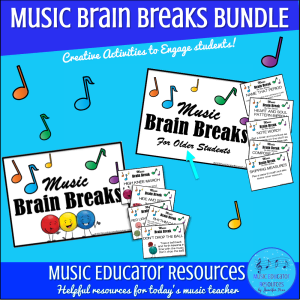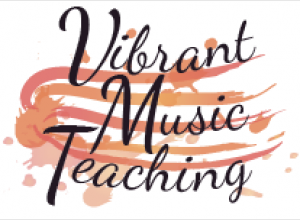I am excited to have Tim Topham as a guest today for our Tech Tuesday feature. He has a terrific blog that you should visit. His posts in this series have been spot on, be sure to check all of them out!
Teenagers and Technology – a match made in heaven
This is the last article in a 3-part series I’ve been writing about retaining and motivating teenage piano students.
The initial idea for the series was borne out of feedback I received from readers of my free Teen Teaching Toolkit eBook. I found that despite their best efforts, many teachers didn’t know how to connect effectively with their teenage students and couldn’t work out why they were losing them to other activities.
I’ve already covered two key reasons that teens quit piano:
Part 1: They aren’t playing music they want to play
In the first part of the series, which you can read at Wendy Stevens’ fantastic Compose Create blog, I discussed that teachers of teenagers have to be open to teaching the music their students want to play.
Part 2: They don’t see the relevance in their lessons
In Part 2 of the series, I explained that teenagers also need to see the relevance in what they are doing and their lessons have to be practical and useful. To them. Now.
This week, in the final part of the series, we’ll discuss how keeping up with technology can help you motivate and retain teenagers in your studio.
Bach v Xbox – how can you win?
Technology is a great motivator for today’s adolescents.
If you’re trying to get students to choose between 30 mins of Bach practice hands separately with a metronome and 30 minutes on their Xbox, you’re going to lose every time!
But what if they got to learn their favourite pop songs by playing along to the full band and vocals on their iPad for 30 minutes? Or if they got to practice their jazz improv by playing along with a bass and drums? How much more engaged could they be?
I’m not saying that learning Bach isn’t a good idea for the right student; rather, incorporating aspects of technology is what this post is all about. You don’t have to revolutionize everything that you’re doing in your lessons – small changes can have a lasting impact.
What if I don’t have an iPad?
OK, so I know that not everyone has an iPad. However, I’m hoping that if you’re reading an article like this and you don’t have one, you’re probably at least thinking about it. While I’m not here to convince you to buy an iPad, if you’re looking for ways to keep your teens engaged, I think it’s a ‘no-brainer’.
That said, not everything is about the iPad either. YouTube is a great resource and allows you to do far more than just watch and upload videos. Check out my post about creating playlists for students, for example. There is also plenty of free online music software on the web that you can use: notation software (eg. Noteflight), aural training software and music games.
So, how do you get a start motivating your teens with technology?
Here are my top 3 tips for using technology to inspire your teens this week:
1. Get stuck into Notestar!
The free Notestar app by Yamaha is probably the app I use more than any other when it comes to teaching teens. Notestar provides backing tracks with full vocals for all the latest pop songs. It is updated regularly when new material is released and has lots of the 60s, 70s and 80s included, as well as the latest releases. You’ll even find Baroque and Classical music on there (try playing along to a string section for Canon in D!). While the app is free, songs are about $4 to download, however you can download the first 30 seconds of every song in the catalogue for free to check out whether you’d like it and to see how easy/hard the music is to play.
Notestar is perfect for kids who are learning to play chords and who want to play pop music as it makes otherwise boring chord progressions much more interesting. The on-screen music has printed notation and chord charts so students who can’t read music can still play by chords. There is also a feature to change the music to any key and also play at 3/4 and 1/2 speed while practising.
Tim’s Tip: This week, download and explore the app and the catalogue of music available (you can view and search the catalogue online here without even getting the app). Get a feel for how it works and which of your students might enjoy using it. Test it out yourself and then try it out on one of your teenage students.
2. Find out about how other people are using iPads by reading blogs, magazines and following discussion threads.
I don’t claim to have all the answers when it comes to iPads and I’m always on the lookout for new app recommendations from others. When it comes to buying an iPad and downloading apps, it pays to do some research. Here are some of my favourite resources:
- The iPad Piano Studio (blog and book).
- App recommendations: FPS Resources – iOS App List, Best iPad apps for Piano Teachers and Music Apps for the iPad
- iPad Piano Teachers’ Facebook Group
- Clavier Companion, Pianist and International Piano are all industry magazines that feature articles about technology.
Tim’s Tip: If you haven’t already done so, get a Facebook account and sign up for the groups that I recommend in my post: Top 4 Facebook Groups for Piano Teachers. This is one of the best ways to keep current with trends in music, technology and teaching (and meet teachers from around the world). Set aside a couple of hours this weekend and start doing some research and experimenting at home with apps – you’ll be amazed at what you find.
3. Set engaging practice goals using technology
While many of your teens may have no issue with motivating themselves to practice, there will always be some in your studio who would benefit from a boost. Here are some great practice motivator apps:
- Scale Blitzer, an Australian app, is one of the best apps for encouraging students to practice scales. Set students some scales to work on and the app will do the motivating for you! It even has an international leader-board of top scores – great for those with a competitive edge.
- MusicFlashClass is a great app for note recognition. I often ask students to spend 10 minutes on this a day while they are learning the notes on the stave. Both have competitive settings with time limits and count-downs that are great for teens. PianoNotesPro allows students to do the same thing using their MIDI keyboards. It even has a setting that allows students to practice chord inversions, not just notes.
- Motivating exam students to practice their aural skills can be like pulling teeth! To encourage them, try using one of the following apps: ABRSM, AuralBook, Auralia.
Tim’s Tip: If you have students preparing for exams, trial one of the aural or sight-reading apps and show students how to practice with them at home this week. If you have teens learning to read music, allocate them some time on MusicFlashClass or PianoNotesPro every day at home.
Conclusion
I hope you’ve enjoyed this series about motivating teenagers in your studio. They can be such a fun bunch of students to teach and so rewarding when you connect effectively and can make a real difference in their lives.
While sometimes challenging, I get enormous pleasure from inspiring children to play the piano. I remember how much I enjoyed learning music through high school, the kudos I received as a piano player from my peers and the pride expressed by my parents and family. To be able to give that same gift to another young person is priceless.
For even more teaching tips and ideas, make sure you head to my website. Also, don’t forget to get a copy of my free Teen Teaching Toolkit while you’re there.
Good luck and please get in touch with me if you have any questions.
Bio
Best known for his blog at timtopham.com where he has been sharing teaching resources, tips and repertoire ideas with piano teachers and students since 2011, Tim Topham is also a well-respected presenter, performer and accompanist. Tim is Head of Keyboard at Xavier College and has also taught in Western Australia, Tasmania and the United Kingdom. Tim holds an MBA in Educational Leadership, a Bachelor of Music, Diploma of Education and AMusA (Distinction). He has worked in education as a classroom teacher, private studio teacher, head of department and head of campus. His new eBook: Teen Teaching Toolkit may be downloaded from his website: timtopham.com















0 Comments